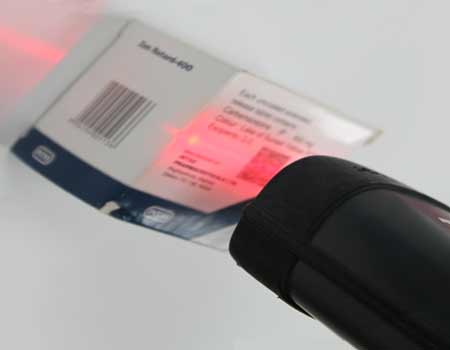Healthcare Industry Barcode Label Software
| Last Updated On:
Healthcare Barcode application providers can ensure that all staff are properly trained in the use of healthcare industry barcodes and that the equipment is used correctly. This will help to enhance patient safety, improve workflow, and ensure accurate data collection. Healthcare providers should also use tamper-evident labels to prevent unauthorized modifications.
Introduction
Uses of Healthcare Industry Barcodes Software
To ensure that all staff are properly trained in the use of healthcare industry barcodes, healthcare providers can take the following steps:
- 1. Develop a training program: Develop a comprehensive training program that covers the basics of barcode scanning, including how to read, interpret and record data.
- 2.Assign trainers: Assign trained personnel to conduct the training sessions. These trainers should have an in-depth knowledge of the barcode system being used in the healthcare facility.
- 3. Provide hands-on training: Hands-on training is essential to ensure that staff can apply what they have learned in real-life situations. Therefore, trainers should provide staff with the opportunity to use barcode scanners in simulated situations.
- 4.Evaluate staff performance: Evaluate staff performance during the training sessions to ensure that they have understood the concepts and can use the equipment correctly.
- 5. Continuously monitor compliance: Continuous monitoring of staff compliance with barcode scanning policies and procedures is necessary to ensure that staff use the equipment correctly.

Download and Install DRPU Healthcare Barcode Software
Barcode Scanning Policies and Procedures
To train staff and ensure compliance with barcode scanning policies and procedures in hospitals, the following steps can be taken:
The Barcode Develop clear policies and procedures for barcode scanning in the hospitals. These policies should outline when and how to use barcodes scanners, how to scan different types of healthcare barcodes, and what to do in case error.
Train all staff members who will be using barcode scanners. This includes nurses, doctors, and other healthcare providers. The training should cover the policies and procedures for barcode scanning, how to properly use the scanners, and how to troubleshoot any issues that may arise.
Provide ongoing education to staff members to ensure that up-to-date with the latest best practices for barcode scanning. This could include regular refresher courses or updates on new technologies and procedures. Barcode scanning procedures to identify areas for improvement.
Healthcare Medical Barcode Scanning Policies and Procedures
To train staff and ensure compliance with medical barcode scanning policies and procedures, healthcare providers can follow these steps:

-
► Develop a comprehensive training program:
Create a detailed training program that covers all aspects of medical barcode scanning, including how to use the equipment, how to scan and interpret barcodes, and how to troubleshoot issues.
-
► Provide hands-on training:
Allow staff to practice using the barcode scanning equipment in a simulated environment before they begin using it in real-life situations. This will help them become comfortable and confident with the equipment.
-
► Conduct regular training sessions:
Schedule regular training sessions to refresh staff's knowledge and skills and keep them up-to-date with any changes in procedures or equipment.
-
► Assign a barcode scanning champion:
Designate a staff member who is responsible for overseeing barcode scanning procedures and training others. This person can serve as a resource for staff and ensure compliance with policies and procedures.
-
► Use incentives:
Use incentives to encourage staff members to comply with barcode scanning policies and procedures. This could include rewards for consistently accurate scanning or recognition for staff members who go above and beyond in their barcode scanning efforts..
-
► Monitor performance:
Regularly monitor staff performance to ensure that barcode scanning procedures are being followed correctly. Use performance metrics to identify areas for improvement and provide feedback to staff.
Security and Privacy of Patient Data contained within Healthcare Barcodes Tool
To ensure the security and privacy of patient data contained within healthcare industry barcodes, healthcare providers should implement the following measures:
| Use secure barcode printers and scanners: | Barcode printers and scanners should be secure and only accessible to authorized personnel. Additionally, the devices should be configured to encrypt and protect sensitive data during transmission. |
| Control access to barcode systems: | Healthcare providers should limit access to barcode systems to only authorized personnel who need to use the system. |
| Implement access controls: | Access controls, such as passwords or biometric authentication, should be used to ensure that only authorized personnel can access patient data contained within barcodes. |
| Regularly update software and security patches: | Healthcare providers should regularly update the software and security patches for their barcode systems to prevent vulnerabilities and reduce the risk of data breaches. |
| Conduct regular security audits: | Healthcare providers should regularly conduct security audits to identify potential vulnerabilities and ensure that all necessary security measures are in place. |
| Secure barcode labels: | Barcode labels should be securely stored and tracked to prevent unauthorized access or theft. Healthcare providers should also use tamper-evident labels to prevent unauthorized modifications. |
| Provide staff training: | Healthcare providers should provide staff training on the importance of data security and privacy, as well as how to handle patient data contained within barcodes. Staff should also be trained on how to report any potential security incidents or breaches. |
Download and Install DPRU Healthcare Barcode Software
Healthcare Ensure Compliance Scanning with Barcode Application
-
Develop clear policies and procedures:
Develop clear and concise policies and procedures for barcode scanning, including when and how to scan barcodes, how to verify the information, and what to do if an error occurs.
-
Provide comprehensive training:
Provide comprehensive training to all staff who will be using barcode scanning systems. The training should cover the policies and procedures, the operation of the scanning devices, and troubleshooting common problems.
-
Conduct regular audits:
Conduct regular audits to ensure that staff are following the healthcare industry barcode scanning policies and procedures. This can include monitoring scanning rates, accuracy, and the completeness of the data entered.
-
Offer ongoing support:
Offer ongoing support to staff by providing resources such as manuals, cheat sheets, and other job aids. Make sure that staff know who to contact if they have any questions or encounter any problems.
-
Encourage a culture of accountability:
Encourage a culture of accountability by holding staff responsible for following barcode scanning policies and procedures. Celebrate successes and address any issues promptly.
-
Evaluate and improve:
Evaluate the effectiveness of the barcode scanning system regularly and make improvements as needed. Use feedback from staff to identify areas for improvement and to refine the policies and procedures.
Healthcare Integrate Barcode with (EHRs) and other IT Systems
Integrating barcode systems with electronic health records (EHRs) and other healthcare IT systems can greatly improve patient safety and workflow efficiency. Here are some steps that healthcare providers can take to integrate barcode systems with their IT systems:

-
↠ Choose barcode compatible with
your EHR, IT systems:
Before implementing a barcode system, it's important to choose one that is compatible with your existing EHR and other healthcare IT systems. This will ensure that data captured by the barcode system can be easily integrated into your other systems.
-
↠ Develop a barcode scanning policy and train
staff:
Developing a barcode scanning policy is essential to ensure that all staff members understand how to use the barcode system effectively and efficiently. Training staff on the policy and procedures is also critical to ensure that they are comfortable using the barcode system and understand the benefits it provides.
-
↠ Implement barcode scanning at key points in the
care process:
Barcodes can be used at various points in the care process, such as at medication administration, patient identification, and specimen collection. It's important to identify the areas where barcode scanning can have the greatest impact and implement it accordingly.
-
↠ Integrate barcode data with EHR and other
systems:
Once barcode data is captured, it should be integrated with your EHR and other healthcare IT systems. This will help ensure that patient data is accurate and up-to-date and can be easily accessed by clinicians.
-
↠ Monitor and evaluate the effectiveness of the
barcode system:
It's important to monitor the effectiveness of the barcode system and evaluate whether it is meeting the goals set out in the implementation plan. This will help identify areas where improvements can be made and ensure that the barcode system is delivering the expected benefits
